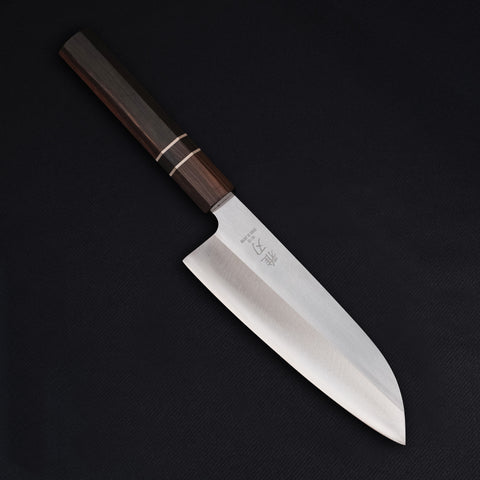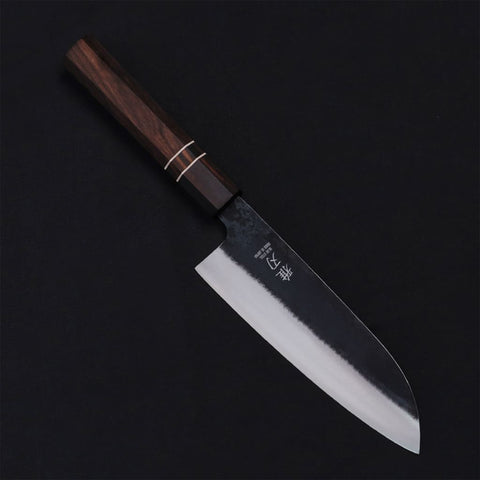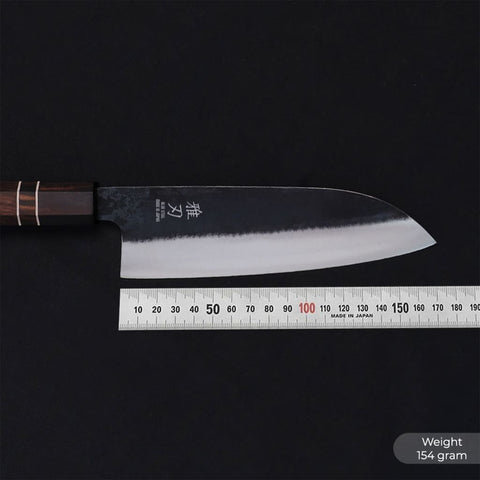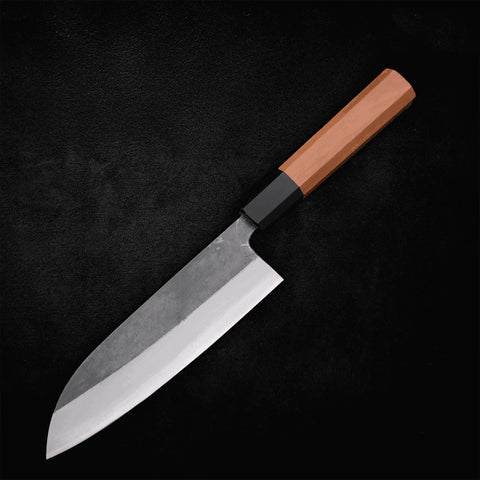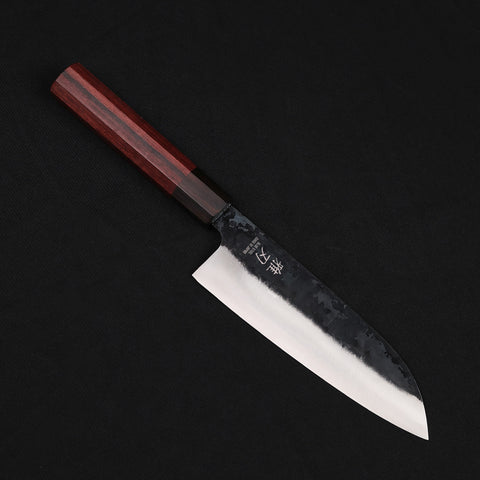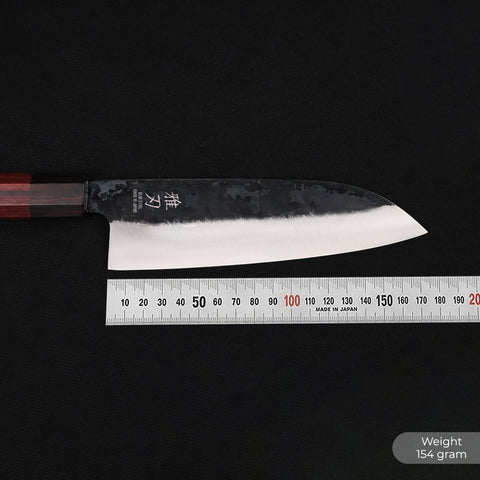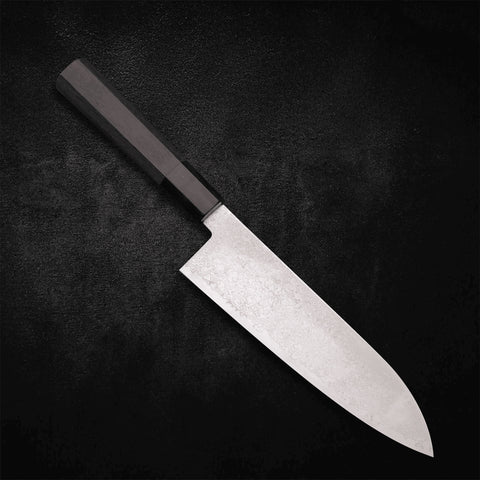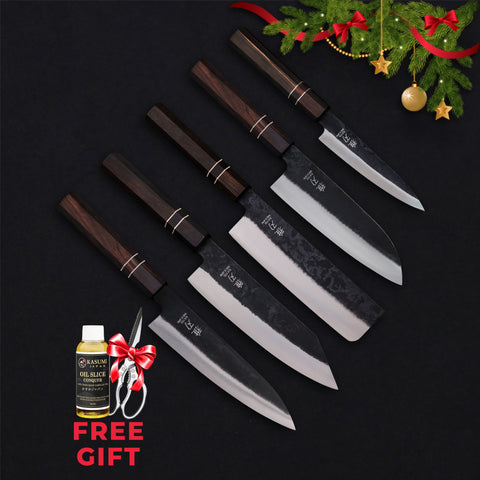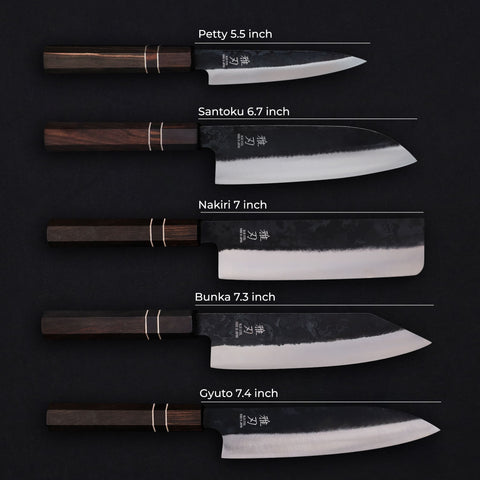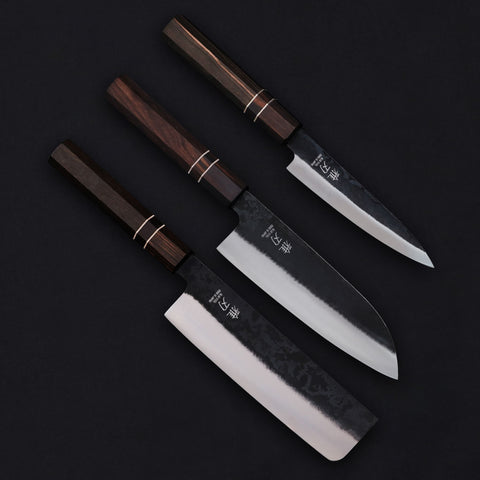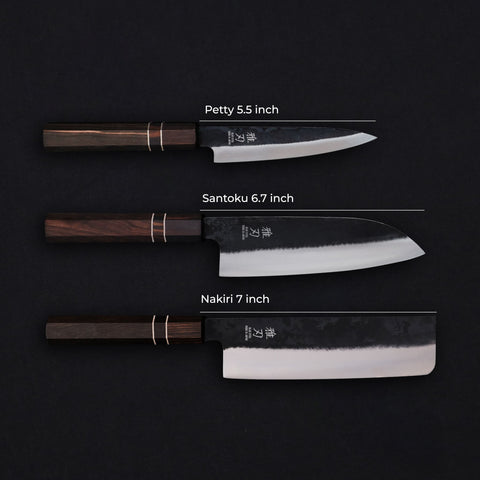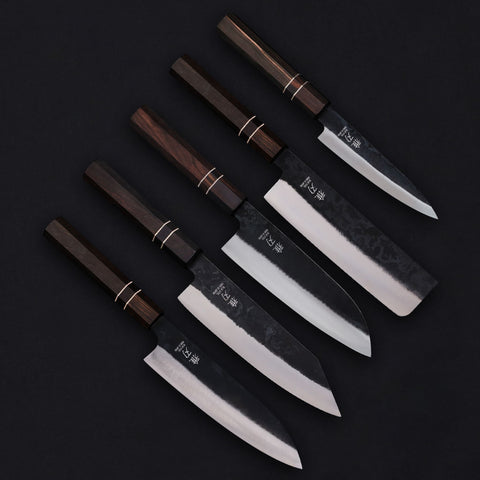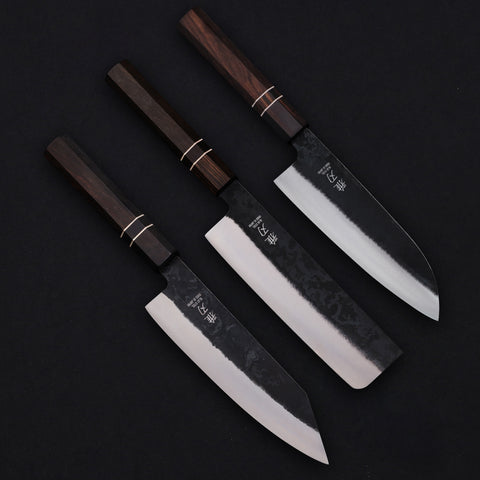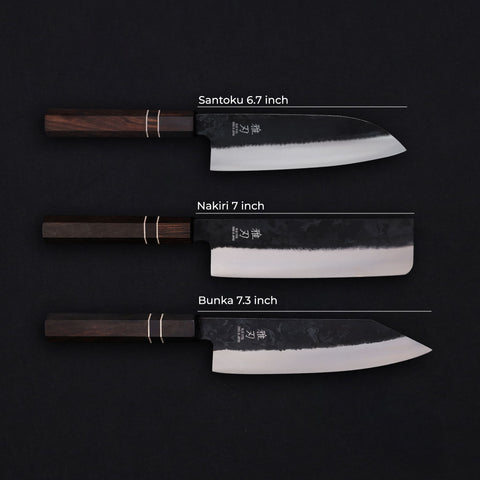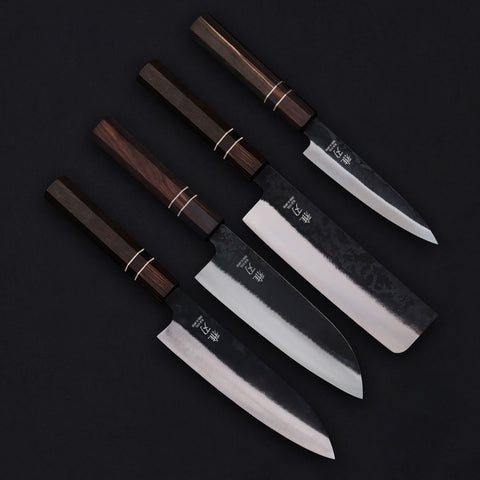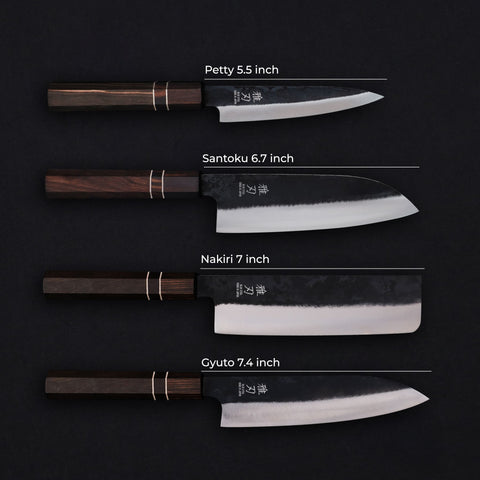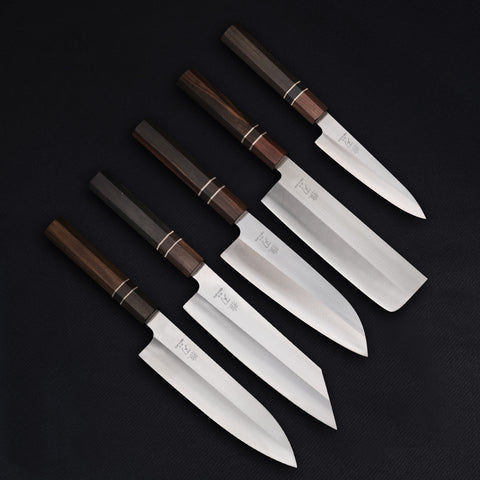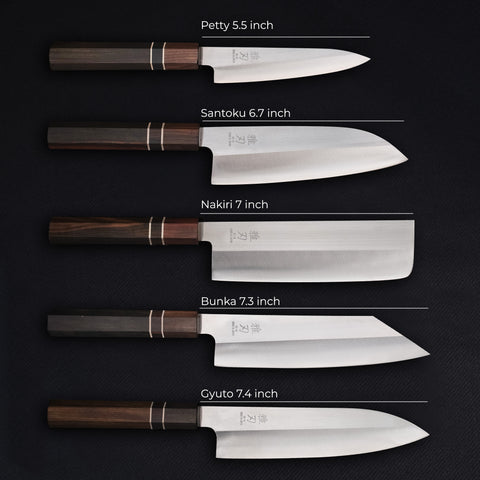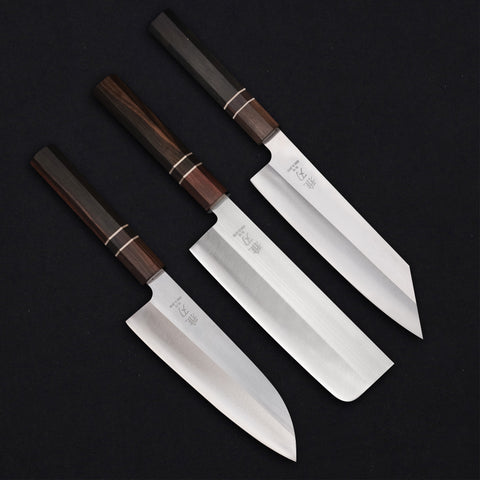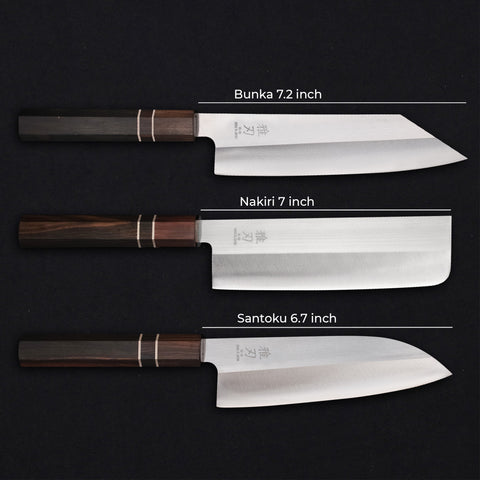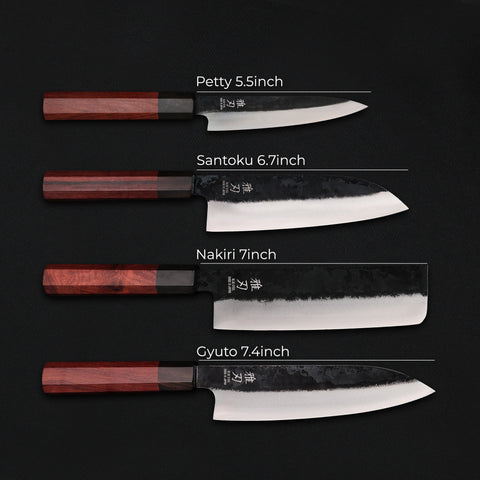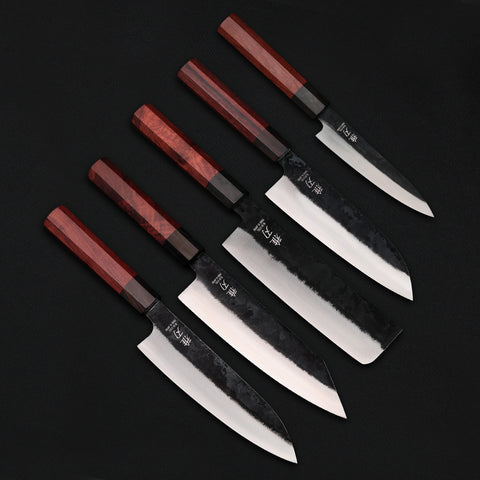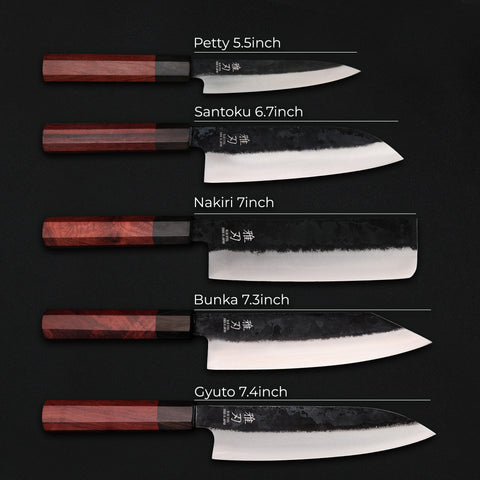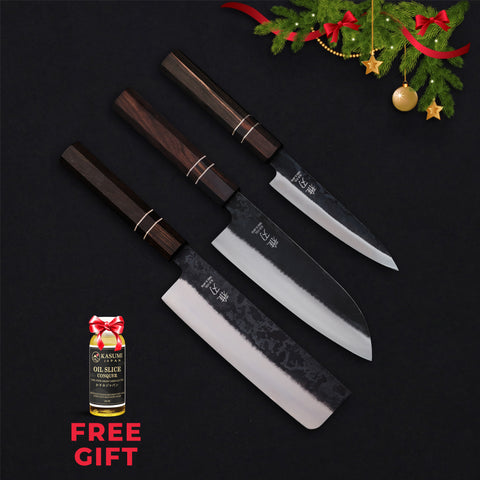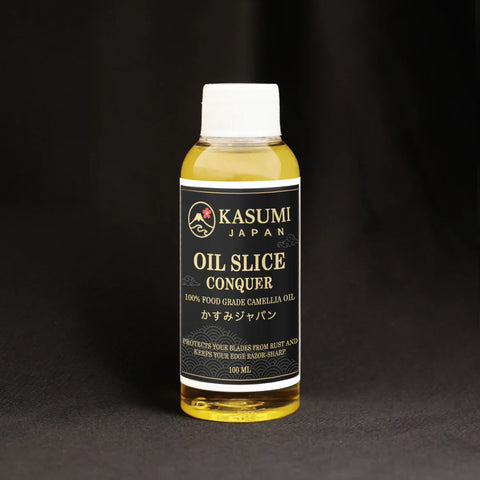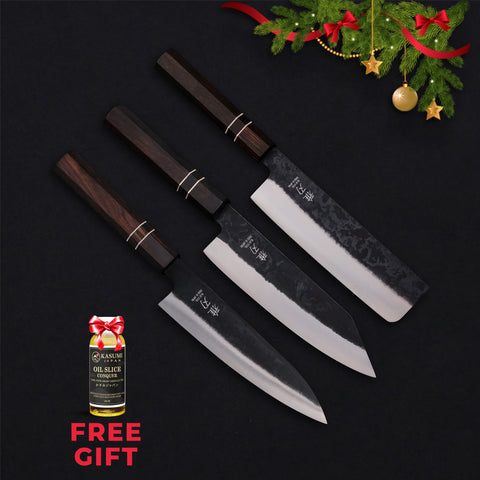The Santoku (三徳包丁) is a versatile Japanese knife designed for clean, effortless everyday prep. With a compact profile and thin blade, it shines at slicing, dicing, and mincing meat, fish, and vegetables—the “three virtues” that gave it its name. Though often compared to a chef’s knife, the Santoku favors a flatter edge and a Kamagata (sheep’s-foot) tip, trading rocking motion for smooth push, pull, and tap chopping with excellent control.
Common lengths range from 165 mm to 180 mm, providing generous knuckle clearance and a stable guiding surface on the board. The straight edge delivers crisp, consistent cuts and keeps its effective cutting length even with routine sharpening. While its refined geometry is not intended for bones or very hard ingredients, the Santoku’s balance of speed, precision, and ease of use makes it a go-to multi-purpose blade for home cooks seeking compact efficiency.
Guide for choosing Santoku Knives
Steel type. High-carbon steels take a razor edge and hold it well but demand careful drying and storage; stainless options trade a touch of bite for easy day-to-day upkeep.
- Blue Steel Santoku Knives – Aogami carbon steel with excellent bite and retention; wipe dry promptly and expect a natural patina.
- VG-10 Santoku Knives – Popular Japanese stainless balancing sharpness, edge life, and corrosion resistance for everyday use.
- SG2 Santoku Knives – Powder metallurgy stainless offering high wear resistance and fine, precise cutting.
- White Steel Santoku Knives – Extremely keen edge that sharpens quickly; reactive, so keep the blade clean and dry.
Finish. Surface texture shapes both food release and character. Textured blades help reduce sticking; polished patterns emphasize glide and easy cleanup.
- Tsuchime Finish Santoku Knives – Hammered dimples create air pockets for smoother food release.
- Nashiji Finish Santoku Knives – Light “pear-skin” texture; rustic look with modest anti-stick near the spine.
- Kurouchi Finish Santoku Knives – Dark forged scale retained up top; traditional feel with some added protection.
- Damascus Santoku Knives – Layered steel aesthetic with a smooth, low-friction face for clean slices.
Size. Match blade length to board space and prep volume. Shorter feels nimble; longer gives more edge contact and steadier, straighter cuts.
- 6.5" Santoku Knives – About 165 mm; compact and agile for small boards and quick daily prep.
- 7" Santoku Knives – About 180 mm; extra reach and momentum for larger batches.
- 6" Santoku Knives – Ultra-compact control for delicate work and tight spaces.
Price. Cost reflects steel grade, heat treatment, handwork, and finish quality. Choose the tier that matches your expectations and maintenance style.
- Santoku Knives Under $100 – Entry-level utility with straightforward upkeep.
- Santoku Knives Under $200 – Strong balance of performance and fit-and-finish.
- Santoku Knives Under $500 – Premium materials and craftsmanship; refined cutting feel and detailing.
Santoku knife FAQs
A Santoku knife is best for slicing, dicing, and chopping vegetables, fish, and boneless meats with precision and control.
A Santoku has a flatter edge and thinner blade for cleaner, straight cuts, while a chef’s knife has a curved edge suited for rocking motions.
You can use it for most kitchen tasks, but it’s not ideal for cutting bones, frozen foods, or heavy-duty butchering.
It lacks the curved belly for rocking cuts and can be less effective for large or tough ingredients.
Common mistakes include twisting the blade mid-cut, using it on bones or hard materials, and applying too much force while chopping.


